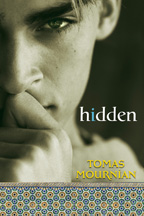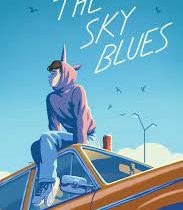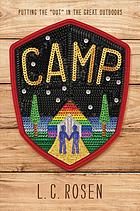 Based on Tomas Mournian’s own journalism, this fiction draws from the seldom talked about underworld of rehabilitating homosexual teens. If you put The Diary of Anne Frank and Francesca Lea Block’s Weetzie Bat into a blender and added a bit of spice, you’d get Hidden.
Based on Tomas Mournian’s own journalism, this fiction draws from the seldom talked about underworld of rehabilitating homosexual teens. If you put The Diary of Anne Frank and Francesca Lea Block’s Weetzie Bat into a blender and added a bit of spice, you’d get Hidden.
Ahmed has just been released from a rehabilitation center for gays, where he endured shock treatment and various medications. His overbearing and abusive father cannot stand him, especially since Ahmed reminds him of ex-wife ― the one person he could not control and who left him. Ahmed makes a run for it and gets picked up by a couple of sympathetic lesbians who understand what is happening. Eventually, Ahmed makes his way to San Francisco and uses the phone number given to him at the rehab center to contact a safe house that will hide him away until he is 18.
Using the alias Ben, Ahmed now must convey his story, no matter how painful, in order to be hidden away so that various agents of the rehabilitation center do not find him and force him to return to rehab. Ahmed hides away with several other colorful characters: Anita (whose gender is always in question); the walking sex-on-a-stick, Hammer, who performs on the Internet for those willing to pay; and the brooding Latino J.D., who Ahmed lusts for, but whose friendship with Ahmed becomes muddled and confused as the story ends. There are a few other characters thrown in that are not particularly developed, but who move the story along.
The book’s ending leaves room for a sequel, though Mournian wrote it as a stand-alone novel. Hidden also features an interesting Q & A with the author that explains where the story came from.
Ahmed/Ben is a sulking character who typifies a confused gay teen ― confused by the need to love and share love as he deals with his own demons and systematically compares them to the other wounded souls he is living with. He judges them, just as the reader does. We size them up and try to label them, even if some of the characters defy labeling.
Although difficult to believe in parts, Hidden illustrates a defect in American culture, highlighting families who send off a child to be “rehabilitated†into becoming heterosexual, as if being gay is a defect that can be fixed. This book is loosely based on real safe houses that have been featured in various news outlets; the characters’ stories are somewhat based on actual accounts as well.
Hidden is appropriate for older teens and adults (due to adult themes, such as drug use and sexual situations) and is suitable for any library that wants to provide edgy fiction for its young adult and adult patrons.
Reviewed by, Johnnie Gray
Interim Director of Media Services
Christopher Newport University





[…] with positive reviews from LAMBDA, Windy City Times, and Instinct. Recently, hidden was both reviewed and nominated by the American Library Association, and The San Francisco Chronicle devoted its […]